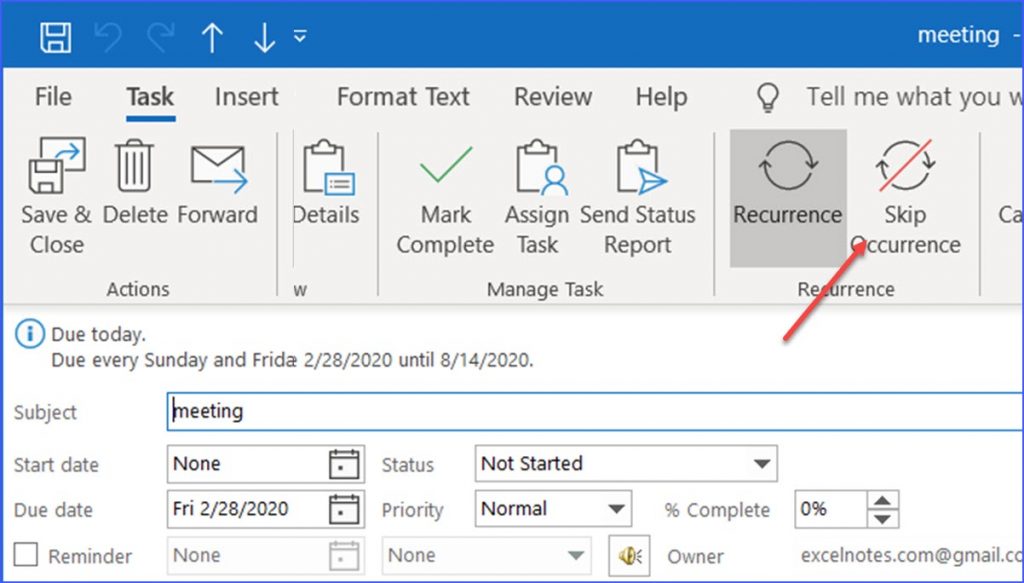

Rather its date just advances as it recreates itself, and I find that behavior much less useful. Without the TWC-MYN filtering, the task never goes away. The TWC-MYN design is perfect for using Outlook recurring tasks. It then stays there until you complete it, and the cycle repeats. There, after you mark the task complete, it disappears, and it only reappears when it's new start date equals today. The real value of this behavior, I think, is in a date- and completion- filtered task list, like the TWC-MYN configured TaskPad or To-Do Bar. Mark that complete and another task appears with the date set to the next week out, and so on. If you create a weekly scheduled recurring task there and then mark it complete (or delete its instance), you'll immediately see another task appear there, with the date set ahead to the next week. Note, if you do not mark it complete, the old instance of the task remains alone (you don't end up with two identical tasks come Friday).Īn unfiltered task list (like the Simple List view in the Tasks folder).

When you mark it complete (or delete its instance), a new task is created with the date set to the subsequent Friday. This will initially create a task in your list with a date set to the closest Friday. To do that, leave the Recur button (at the top middle of the dialog box) in its default selected state of Recur with a week count of 1, and set the day of week below that to Friday. Sometimes you want a task dated to a specific day every week (Friday say). Since this is the most common and easiest to understand, let’s work with that as an example. This dialog defaults to a weekly Recurrence pattern (see the upper left corner).
RECURRING TASK IN OUTLOOK HOW TO
How to Use the Task Recurrence Dialog Box When you click the Recurrence button, the following Task Recurrence dialog box opens: In Outlook 2007 that Recurrence button is found in the middle of the Task Ribbon at the top of the Task dialog box (shown below), and in earlier versions it is found in the middle of the main toolbar at the top of the Task dialog box. You may know you can mark a task as recurring by navigating to the Recurrence button at the top of the Task dialog box (I assume you know the Task dialog box is the dialog box that opens when you double-click a task, or when you first create the task using the New Task button). In describing recurring tasks, I'll sort these out. The two are nearly identical, but each has its own best use.

One I call a scheduled recurring task, and the other I call an interval-since-completion recurring task. Probably the most confusing aspect of recurring tasks is that there are two kinds of recurring tasks, and understanding the difference between them can be confusing. That part is pretty clear to most people. I get a lot of questions about how to use them.įirst of all, recurring tasks are used for repeating activities, activities that need to be done over and over again, often on a schedule.

New recurring tasks (created with a start date) will work fine.īut the real purpose of this article is to teach you about Outlook recurring tasks in general. See the end of this article for more discussion on why I think this happens in the first place. The solution is to fully delete the old task and make a new one, making sure to set the start date in the new recurring task. This article describes how recurring tasks work in Outlook, and how to fix your recurring tasks when you switch from a Due Date field based system to a Start Date field system (as recommended in Edition 2 of the book).įirst of all, for those of you who have adopted the new start-date driven task system of the book’s second edition, you will find that many recurring tasks already in place will stop working new instances no longer appear in your TaskPad/To-Do Bar when their time comes.


 0 kommentar(er)
0 kommentar(er)
